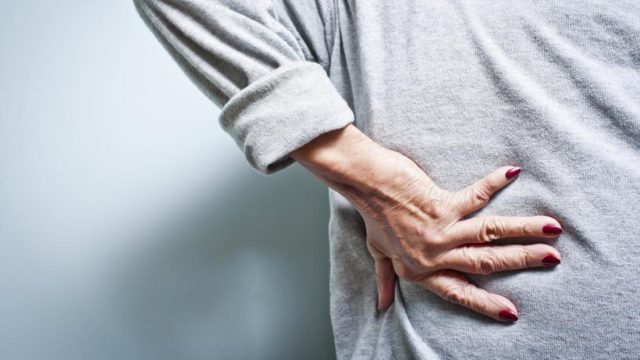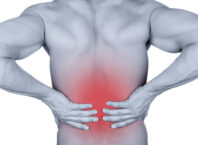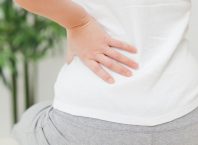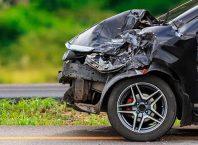Low back pain is a problem that exists as a part of everyday life, and you can take care of yourself.
Even then, low back pain is still one of the most reasons people seek medical treatment. And it is not a surprise that this condition is also responsible for up to nearly half of the productive missing time.
Lower back pain or lumbago is a sense of pain around the bones of the lumbar, between the discs, tissues, muscles, and nerves of the spine.
Not only affecting the spine area, but it may also radiate to organs around the pelvis and abdomen.
Nearly 80% of low back pain sufferers are adults aged 30-50 years of age, with mild to severe pain intensity.
Fortunately, in general, back pain is not a disease. It’s easier to say that low back pain is a part of the typical experience of inactive life.
What causes low back pain?
Causes of low back pain are divided into two leading causes, which are the mechanical cause and non-mechanical cause.
Mechanical back pain
Mechanical causes are triggered by the deteriorating of structures and durability including waist joints, discs, muscles, ligaments, nerves, and bones. With age as the main factor.
As we walk on two legs, spinal structures interacted in seamless ways to support us to support the weight and do the activity.
However, this could backfire at some point and gives mechanical back pain.
Here are some of the conditions included in the mechanical causes:
1. Sprains and strains
This is the most typical cause of mechanical back injuries which resulted in pressure on the tendon or muscle. This is caused by several factors such as wrong sitting position, full-time rest after surgery, lifting heavy weights, or overstretching the muscle.
In severe conditions, the ligaments can experience a tear.
The vast majority of mechanical back pain gets better by itself without requiring medical intervention.
2. Spinal disc degeneration
This is because there is a deterioration in the strength of the discs in the spine. Aging is the most significant factor, also slouched position and other offending activities.
3. Spinal structure change
The spinal structure change generally occurs as we grow older and can lead to bad posture. Scoliosis, kyphosis, and lordosis, are some examples of the triggers that can change the bone structure.
4. Spinal disc injury
Crack or slipping disk when people fell or twisted of a sudden.
In certain situations, the discs can press the spinal nerves, causing pain like burning or a needle pin on the back radiating to the legs. This is also known as sciatica.
5. Lumbar radiculopathy
Inflammatory or pressure on the spinal nerve occurs when discs are slipped. This makes excessive compression in the spinal nerves.
Limbs that are innervated by these nerves will experience pain, tingling, and numbness.
Spinal stenosis
Compression in the spinal nerves due to a narrowing of the spaces within your spine can put high pressure on the nerves that travel through the spine.
Non-mechanical back pain
Certain medical conditions can also trigger low back pain, such as:
1. Kidney stones
People with kidney stones feel the pain along their side waist, back, and below their ribs. It may spread to your stomach and pelvic area.
2. Osteoporosis
Osteoporosis is a condition when the density of the bone is decreased. This condition makes the bones brittle, porous, and easy to crack.
3. Arthritis
Joint inflammation or arthritis is a condition for the occurrence of inflammation in one or more joints.
The perceived symptoms are usually in the form of pain, swelling, redness, or warm sensation in the skin.
One of the osteoarthritis that attacks the cervical spinal area is cervical spondylosis. This condition can cause a sense of pain and stiffness in the neck.
4. Fibromyalgia
5. Tumors
6. Cancer from surrounding organs
What is the type of pain which occur in almost low back pain cases?
There are two typical patterns of frequent back pain occurrence.
1. Back dominant pain
Most people with no past medical disease usually experienced back-dominant pain.
This type of pain radiates down from the neck along the back to our butt and or around the hips.
In some cases, patients just have isolated pain in the back while others can sometimes feel the pain down to the leg.
But the condition is dominantly due to back pain. That’s all.
Most of these people get relief by doing particular movements or positions.
For example when they bend the spine backward or bend forwards.
Back dominant pain typically comes and goes. But some of them come in the form of muscle spasms as you move in.
No surgery or complete medical treatment for this type of back pain. This is because there’s no damage to the nerves or spinal cord in the spine.
2. Leg dominant pain
Back pain with leg dominant pain is comprised of two common problems:
Spinal disc problem
As said above, the spinal disc that puts pressure on the nerves in your back can trigger pain, and it travels down to the legs.
This is a condition often referred to as sciatica.
Although, there may be pain felt in the low back, this time the leg pain is more dominant.
The pain, however, it’s constant. But it tends to feel better when you rest or lie down.
Low back pain due to sciatica often gets better by itself. But some cases followed by other symptoms may need specific advice or medications.
Leg pain
This pain may become worst only when you are actively moving your legs, such as standing, walking, and running.
The condition of your back may get better when you bend forward or when you sit.
The medical term for this leg pain that affects your low back is neurogenic claudication. Basically, people over 60 are at higher risk.
When to worry about your low back pain?
Although dominant back pain is not a critical problem, there are several red flags as a warning. And it needs further investigation and examination.
Especially if the back pain is accompanied by other symptoms.
1. Bladder problem
The first warning is a sudden change in your healthy bowel or bladder control. It may feel like numbness around the groin and rectal area.
This condition might be related to compression of the spinal nerves.
2. Infection
People with pre-existed immune system diseases are at high risk for these infections.
3. Bone fracture
A fracture in your back due to a car accident, falling in concrete, or sports injury is something you might consider to get an immediate assessment.
In another case, bone fracture can be caused by osteoporosis.
4. Cancer
If you have a history of cancer, particularly in the prostate, breast, or lung, then this type of low back pain is a red flag.
The pain might be constant and lasting for weeks. Sometimes, it does not get better even when lying down.
The pain in the back due to the probability of cancer also may arise at night. Some people also have other insidious symptoms such as unexplained weight loss as well.
5. Non-mechanical back pain
As mentioned before, diseases may also affect low back pain.
Consider seeking a medical doctor if your condition is followed by red flags sign.
should I have an x-ray or a CT scan or MRI for low back pain?
If you have one or more red flags symptoms in your back, scanning or imaging may be good a choice.
What is the best way to prevent low back pain?
Being proactive
There is a strong expectation that passive treatment rather than active treatment is the best method to relieve back pain.
For example, believing that you need to lay on your belly and have therapists work on you.
The fact, it’s not just a therapist that needs to do the work to relieve the problem. But you can do it as well.
Avoid full-time rest
Advice to rest was a common treatment approach for low back pain. As well as resting in a recovery period from abdominal surgery.
The exact nature when doing rest is varied. But most common is to stay in bed full time.
Surprisingly, resting full time in bed for mechanical back pain makes the pain worse.
Although people with diseases affecting back pain have to rest, people who don’t move at all is in a worse result.
Medication and alternative methods
Over-the-counter medications can help. But the main reason for this method is to reduce pain so that you can keep moving.
Treatments like spinal manipulation or acupuncture should not be done indefinitely. Though these methods are considered active treatments only when combined with exercises such as yoga or pilates.
In summary
Most of the low back pain can go away by itself.
Further medical treatment requires if the pain is accompanied by red flags symptoms. In this case, x-rays or other imaging may be necessary.
Focusing on the pain by keeping moving and perhaps having some active therapy is the key.
Modifying your workplace and environment can improve your posture while you work.
In the end, low back pain is just a part of your active life.
- Resources:
SpineHealth: Lumbar radiculopathy. https://www.spine-health.com/conditions/lower-back-pain/lumbar-radiculopathy - NCBI: Spinal Stenosis and Neurogenic Claudication. https://www.ncbi.nlm.nih.gov/books/NBK430872/
- NCBI: Low back pain vs. dominant leg pain. https://www.ncbi.nlm.nih.gov/pubmed/22232957
















Is It Normal to Feel Pain Months After Hernia Surgery? Let’s...